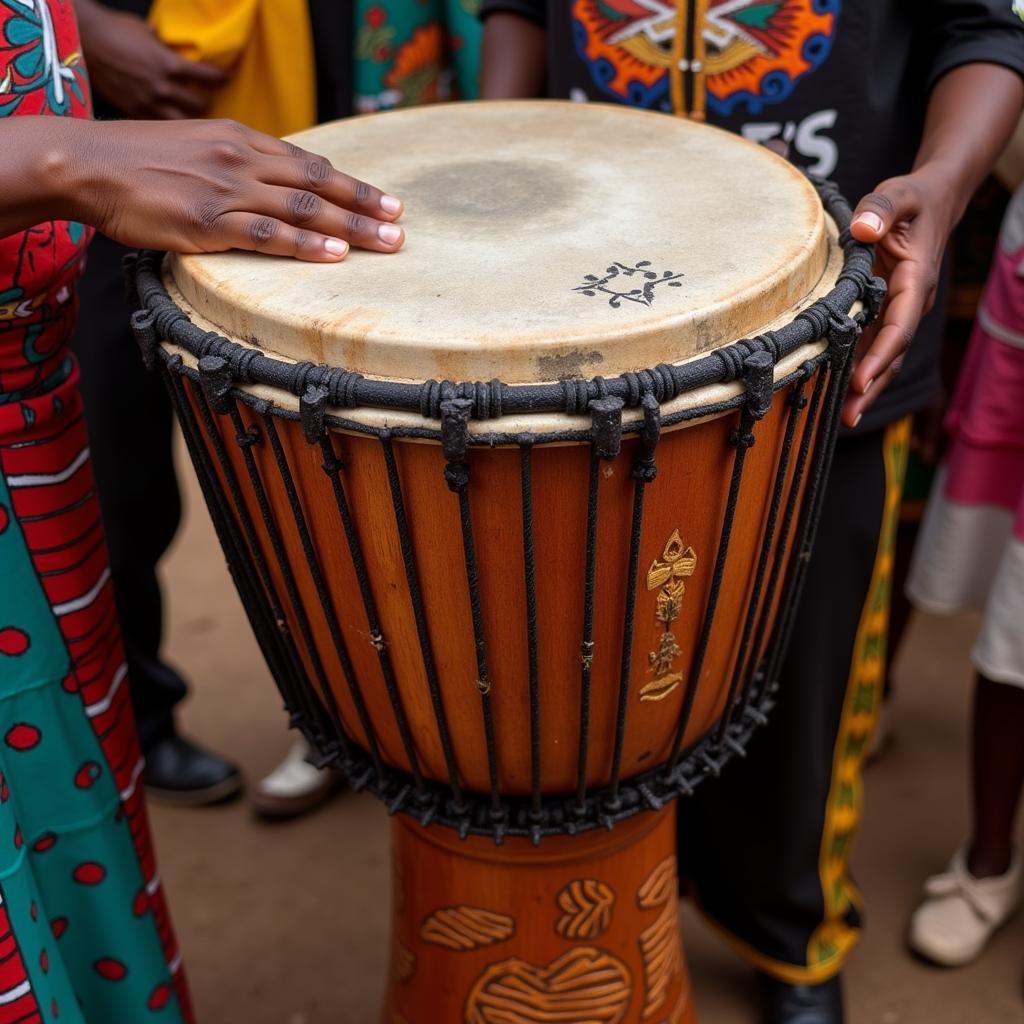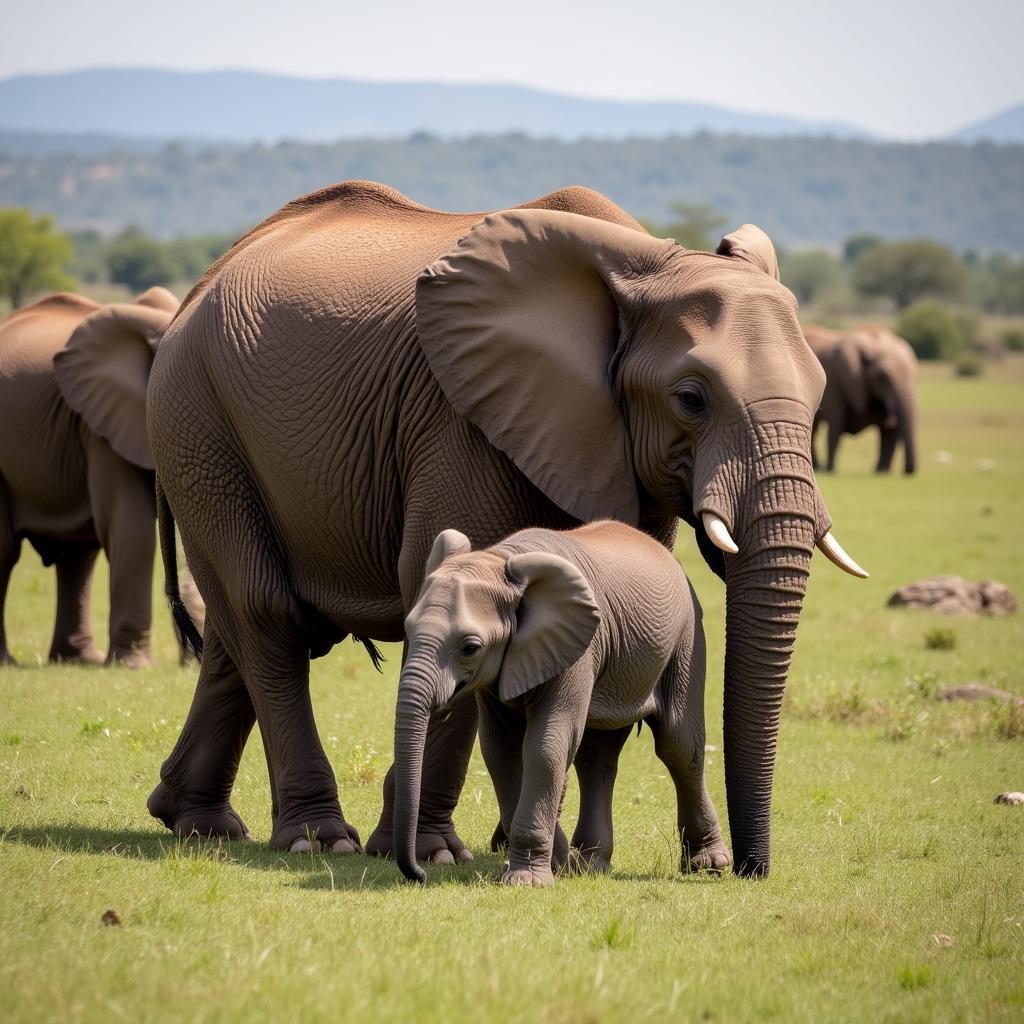The Rhythmic Heart of Africa: Exploring the African Djembe Drum
The African Djembe Drum is more than just an instrument; it’s a heartbeat, a storyteller, and a cultural icon. Originating in West Africa, this goblet-shaped drum has captivated the world with its rich history, vibrant sound, and powerful presence.
 African Djembe Drum in Traditional Ceremony
African Djembe Drum in Traditional Ceremony
A Journey Through Time: The Djembe’s Origins
The djembe’s roots can be traced back to the Mandinka people of West Africa, specifically the Mali Empire, which flourished between the 13th and 16th centuries. The very word “djembe” comes from the Bambara phrase “Anke djem, anke be,” meaning “everyone gather together in peace,” reflecting the drum’s central role in community gatherings, celebrations, and rituals.
Crafted from a single piece of carved hardwood and topped with a stretched goatskin, the djembe’s construction is a testament to the ingenuity of its creators. Traditionally, specific wood types like Iroko, Lenke, and Djalla were favored for their resonant qualities, contributing to the drum’s distinct voice.
 The African Djembe Drum Making Process
The African Djembe Drum Making Process
For centuries, the djembe remained a sacred instrument within West African communities, played during important ceremonies, rituals, and dances. Its powerful sound, capable of reaching impressive volumes, was (and still is) used to communicate across distances, much like a talking drum, conveying messages, news, and stories.
More Than Music: The Djembe’s Cultural Significance
The djembe is more than just a musical instrument; it’s deeply intertwined with the social fabric of West African culture. The rhythmic patterns played on the djembe are not merely melodies; they are complex languages, conveying emotions, stories, and historical events.
Historically, the djembe played a vital role in various ceremonies:
- Birth Celebrations: The djembe’s lively rhythms welcomed newborns into the world, celebrating new life and blessings.
- Coming-of-Age Rituals: During these rites of passage, young men and women would dance to the djembe’s beat, marking their transition into adulthood.
- Harvest Festivals: The successful harvest of crops was a joyous occasion, with djembe rhythms accompanying celebratory dances and songs of gratitude.
- Spiritual Gatherings: The djembe’s hypnotic rhythms were believed to connect people to the spirit world, facilitating communication with ancestors and deities.
A Global Rhythm: The Djembe’s Journey to the World Stage
The djembe’s journey from the heart of Africa to the global stage began in the mid-20th century. As African music and culture gained international recognition, so did the djembe. Musicians like Babatunde Olatunji and Mamady Keïta played a pivotal role in introducing the djembe to Western audiences, showcasing its versatility and captivating rhythms.
Today, the djembe’s popularity continues to soar. It has become a staple instrument in various musical genres, from world music and jazz to fusion and even electronic music. Djembe classes and workshops are thriving worldwide, attracting individuals from diverse backgrounds eager to experience the joy of playing this iconic drum.
The Djembe Today: A Legacy of Rhythm and Unity
The enduring appeal of the African djembe drum lies not just in its vibrant sound but also in its powerful message of unity and connection. The djembe’s ability to bring people together, transcending cultural barriers through the universal language of rhythm, is a testament to its enduring legacy.
Whether played in a traditional African village or a modern music studio, the djembe continues to resonate with the human spirit, reminding us of the power of music to heal, inspire, and unite. As you listen to the djembe’s hypnotic rhythms, let yourself be transported to the heart of Africa, where every beat tells a story.

